The Funding Challenge
Funding is the most significant impediment to modernizing the stormwater system for future generations of San Diegans. The funding challenge is due to a variety of factors, including the lack of a major revenue source for stormwater services or improvement projects like pipe replacement.
The City’s stormwater fee hasn’t been increased since 1990 and the average household pays about $12 annually – one of the lowest fees in the country and four times below the national average of $48.
With so little revenue flowing in, the Stormwater Department largely relies on the City’s daily operating budget to cover its expenses, including costly emergency repair projects. Funding for stormwater services and projects has long been slow to be recognized as a priority at the local, state and federal levels.
Nevertheless, the Stormwater Department has made significant progress in recent years to position stormwater projects for funding. The City competed for and won a federal Water Infrastructure Finance and Innovation Act (WIFIA) loan for $733 million dollars to fund capital projects including the replacement of failed pipes, pump station upgrades, green infrastructure, and others.
The chart below demonstrates the five-year funding need, estimated funding for capital projects and operations and maintenance efforts, and the projected funding gap.
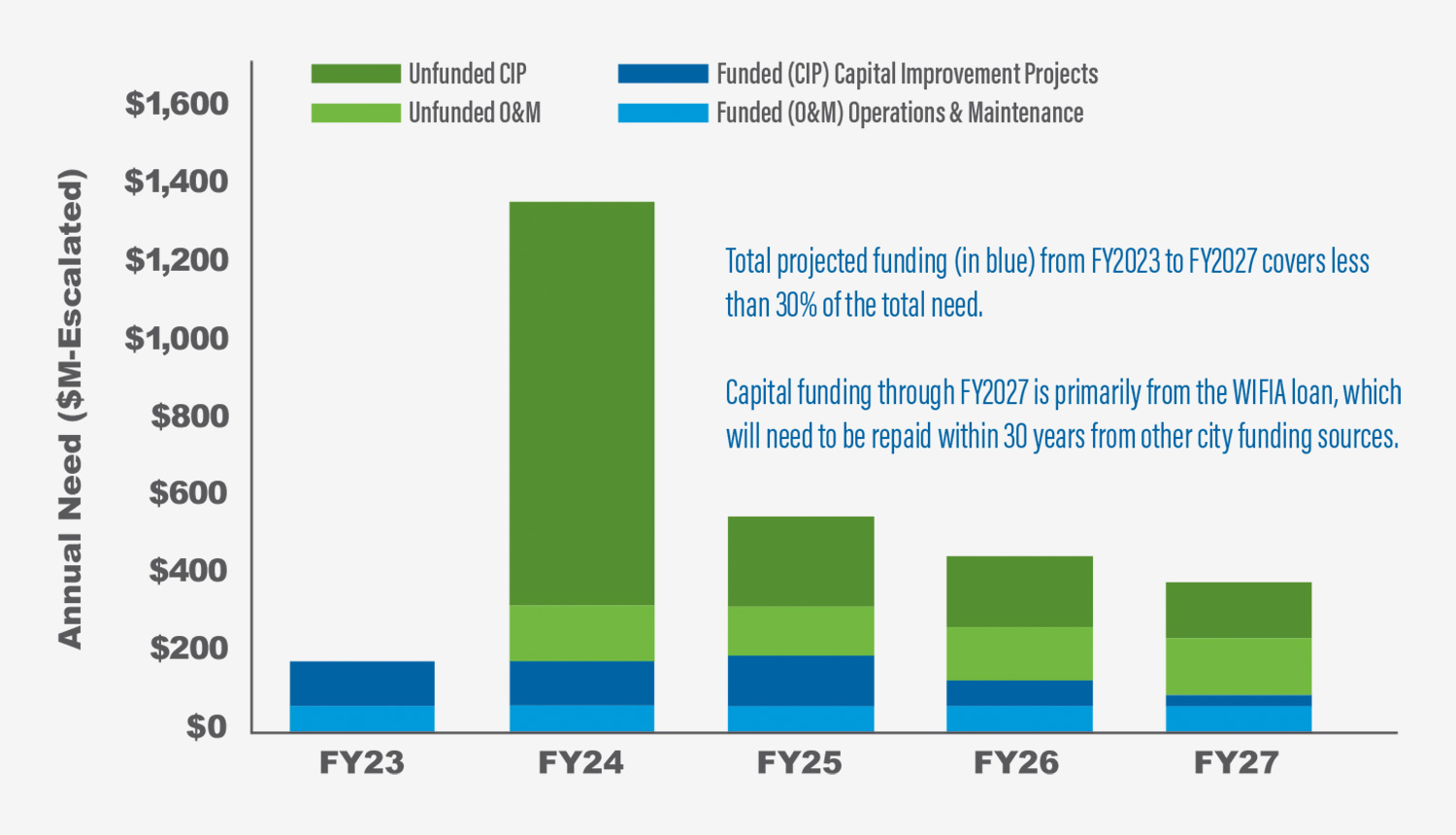
Unfunded Needs for the Stormwater System
Because the vast majority of our stormwater infrastructure was installed between 50 and 100 years ago, aging pipes, channels, and pump stations are in desperate need of upgrades and, in some cases, replacement. In fact, San Diego’s Stormwater Department has identified a thousand areas that are deteriorating to the point where they could fail during a significant rainstorm.
Unfunded needs include:
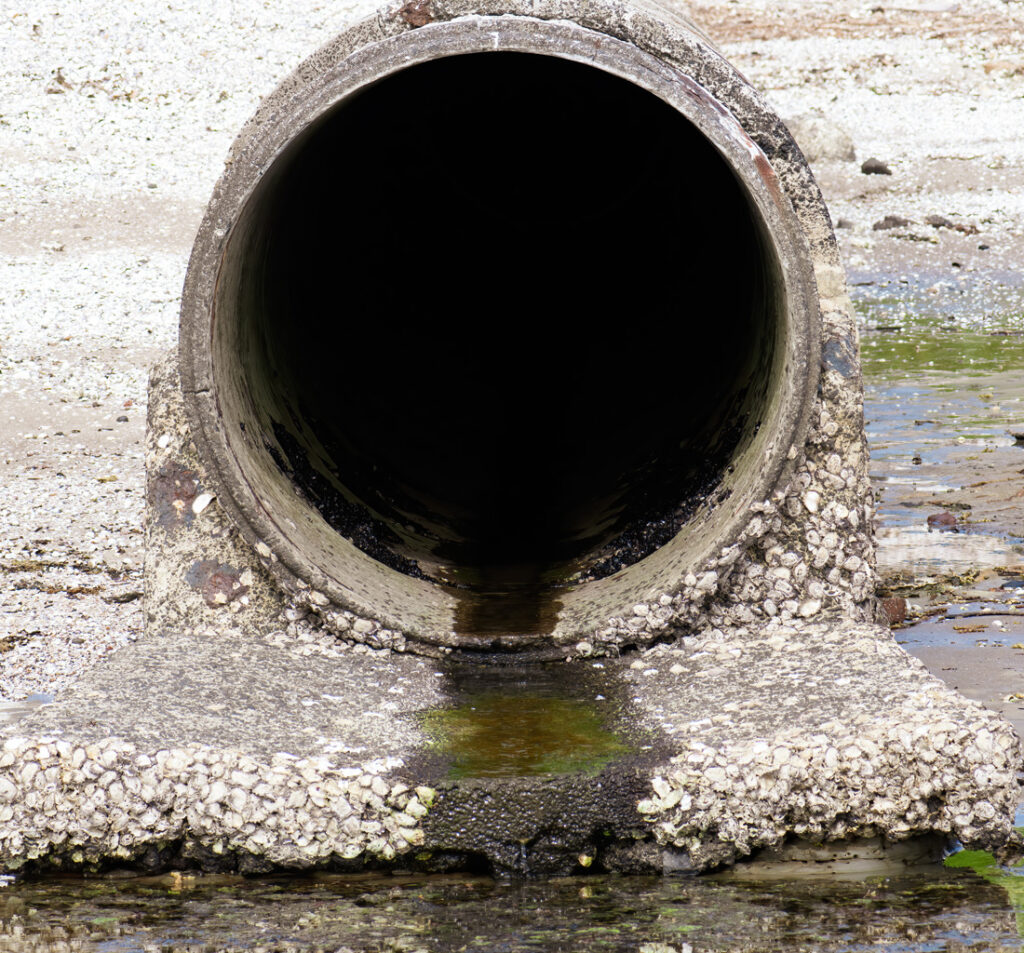
Protecting Clean Water
- Much of the stormwater that falls on our neighborhoods goes untreated. More green infrastructure is needed to capture and filter pollution from this runoff before it reaches the creeks, bay and ocean where San Diegans recreate.
- Due to insufficient funding, minimal progress has been made on the state requirement to install 1,500 trash capture devices or inserts into the existing stormwater system to remove pollution closer to its source.
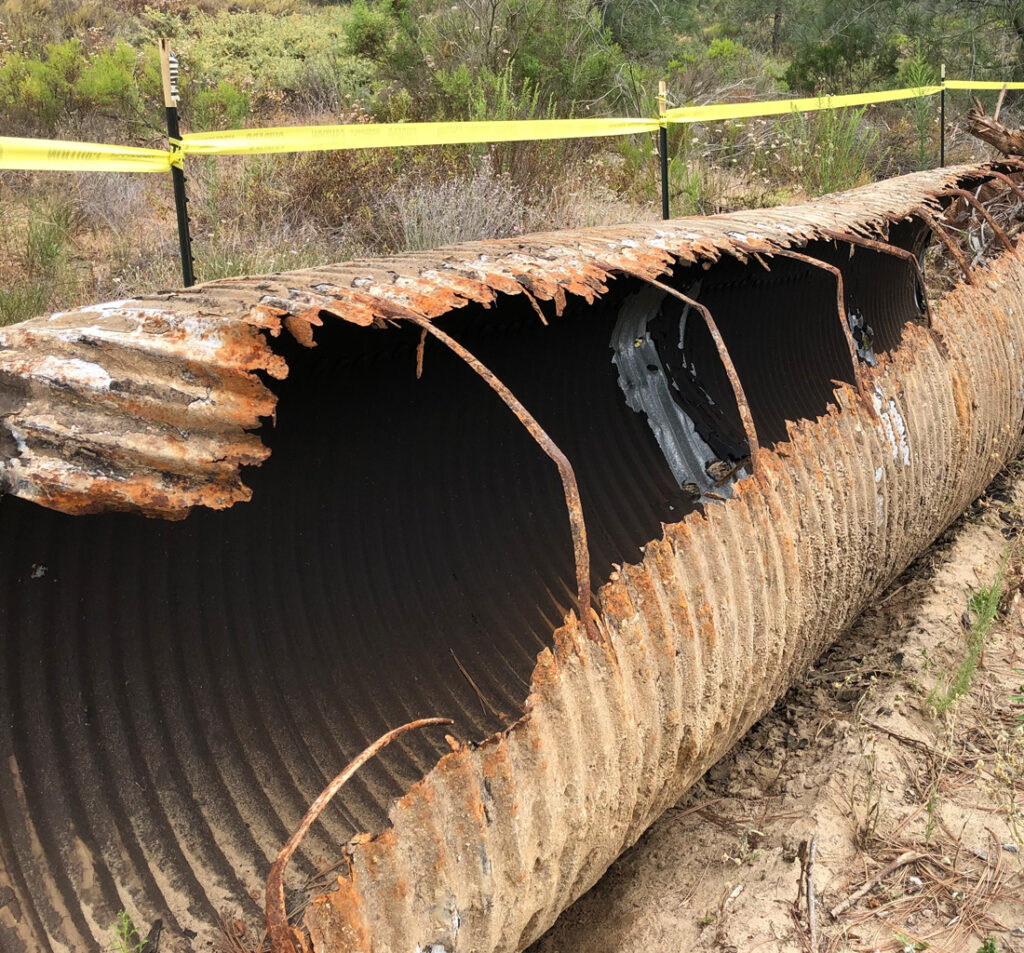
Ensuring Flood Safe Communities
- About 25 miles of pipes and other aging stormwater infrastructure pose a high risk for flooding due to replacement or maintenance needs over the next five years.
- The entire levee program is currently on hold due to a lack of funding even though there are 90 known levee deficiencies and 120 unaddressed locations where there are obstructions that compromise the levees’ ability to provide the intended level of flood protection.
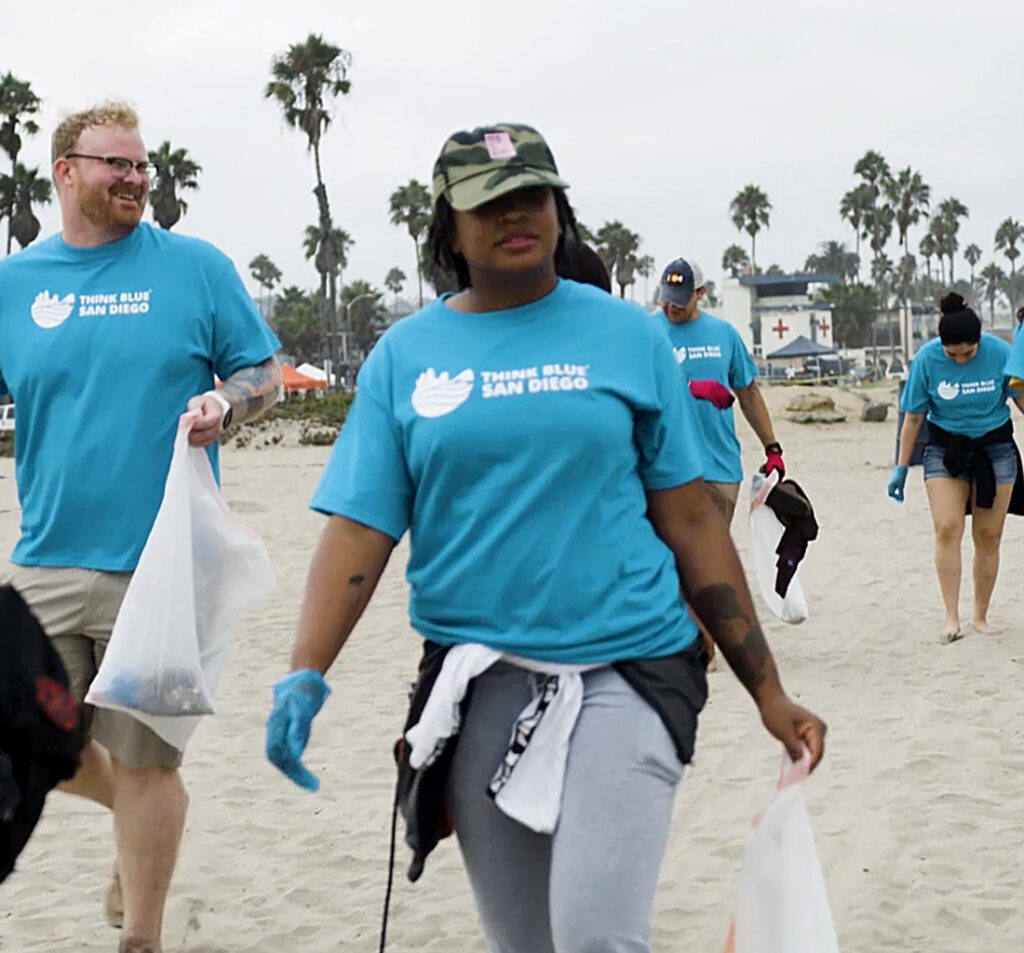
Prioritizing Education, Outreach and Engagement
- There is limited funding to educate the public about the importance of keeping pollution and trash out of our local waterways to protect our quality of life, including safeguarding neighborhoods from flooding, ensuring clean water, and keeping clean beaches for all.
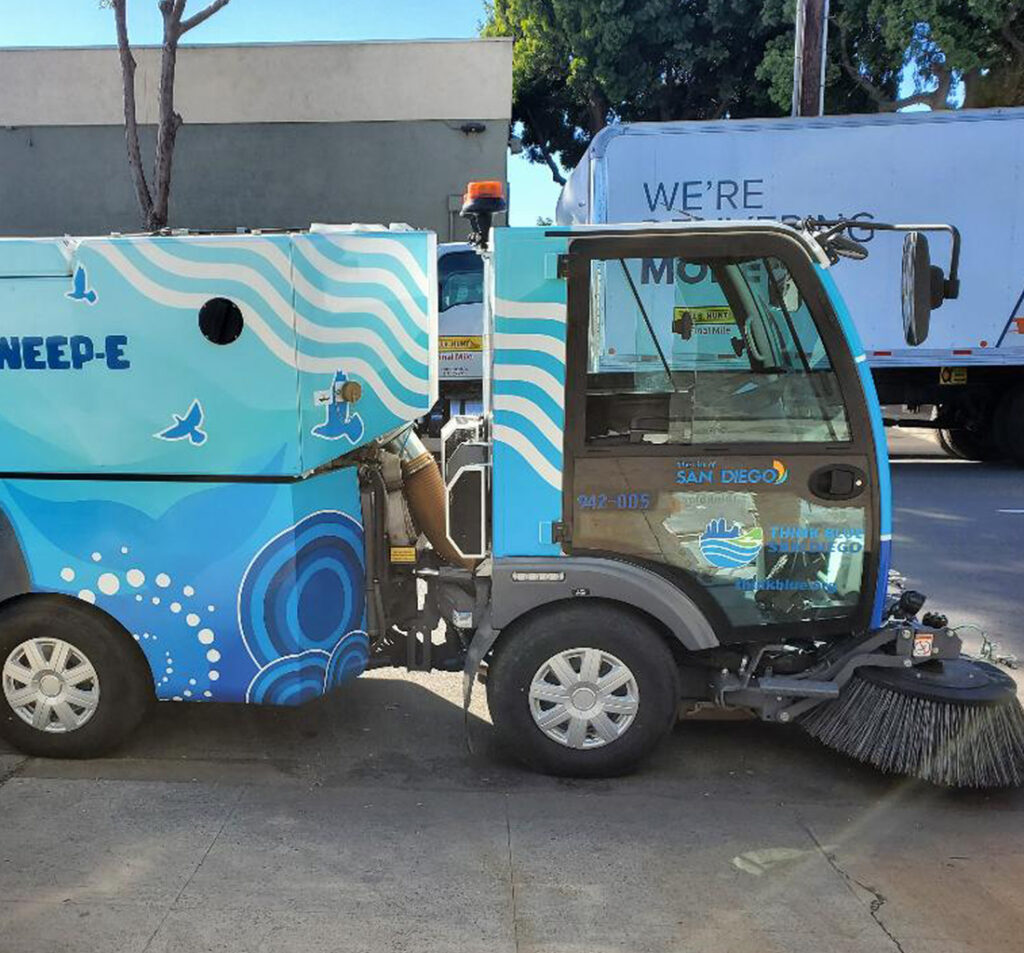
Providing Clean and Green Streets
- More than 80 street sweeping routes and over 12,000 storm drain inlet locations have high pollution and trash levels that require attention.
- Over 1,500 sidewalk repairs adjacent to stormwater infrastructure need to be completed.
- More than 500 locations, like trash capture inserts and pollution filtration devices, require regular cleaning, but the entire program is currently unfunded, posing water quality and flood risks.
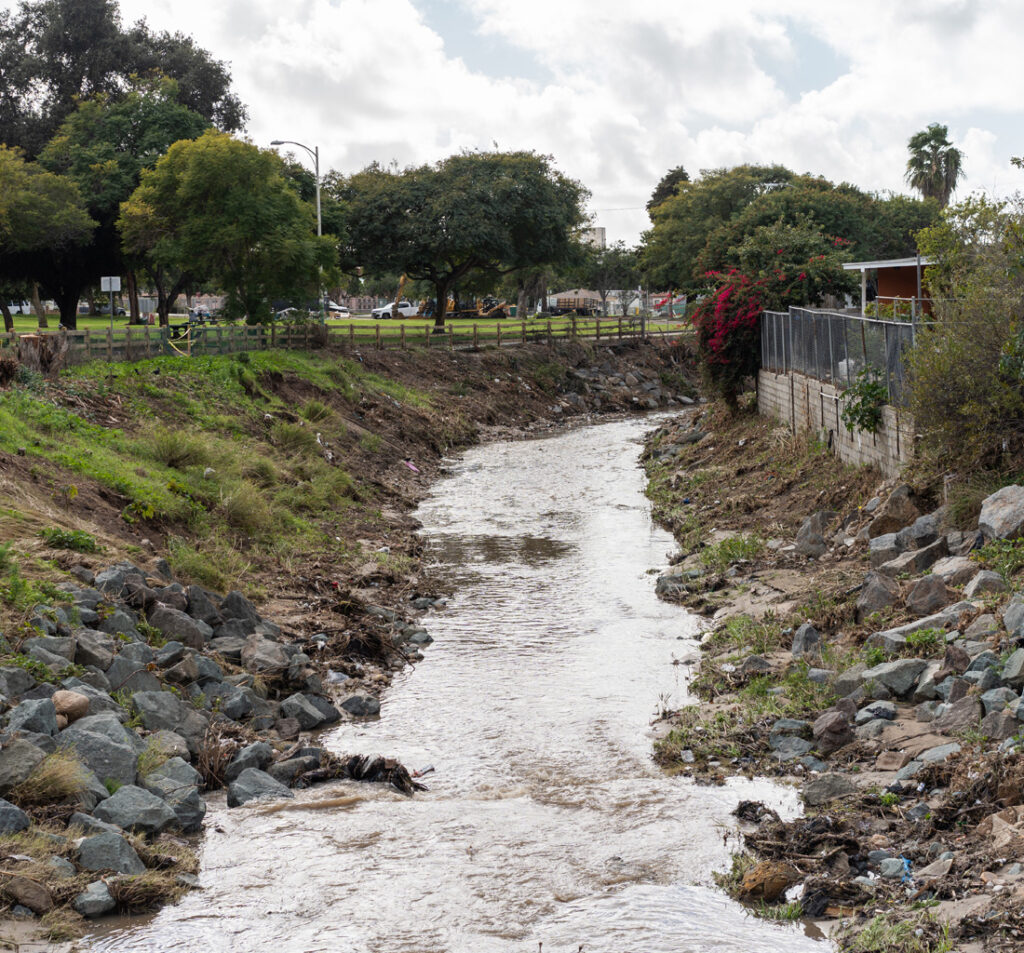
Enhancing Our Communities & Protecting Our Habitats
- 130 channel and stream locations have been identified that need modifications to widen or restore to a more natural condition.
- Continued identification of restoration areas for mitigation credits will be needed in perpetuity to allow for ongoing maintenance and upkeep of infrastructure and natural conveyances with sensitive habitats.
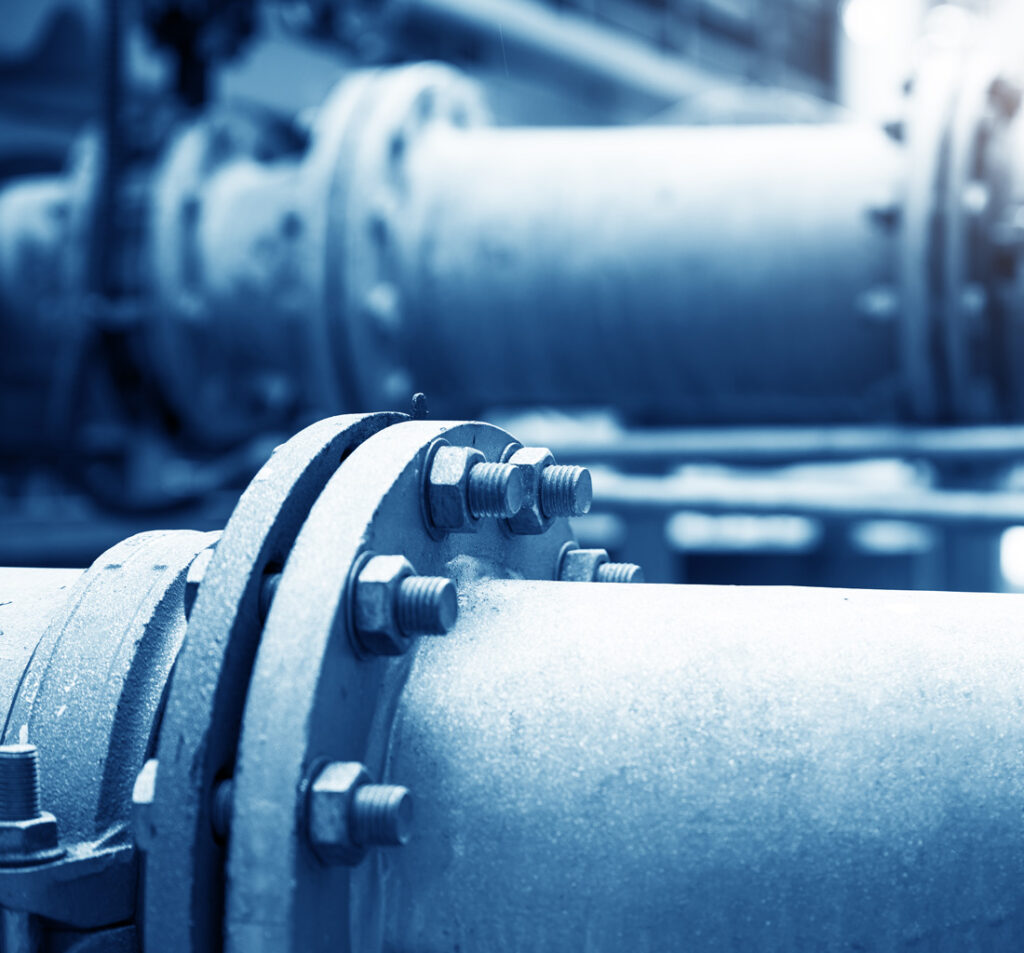
Capturing Stormwater for Use
- The pursuit of opportunities to capture stormwater will be limited because of the cost to fit the capture system into the existing built environment.